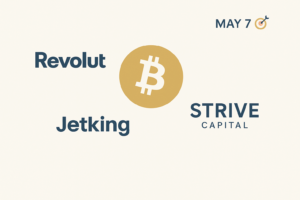
The cryptocurrency market has witnessed exponential growth since the invention of Bitcoin in 2008 by an anonymous entity known as Satoshi Nakamoto.
What began as an experimental digital currency has evolved into a multi-trillion-dollar industry, reshaping finance, investment, and technology.
The rapid expansion of the crypto market is attributed to several factors, including technological advancements, institutional adoption, increased public interest, and regulatory developments.
This article explores the historical growth of the crypto market, its adoption by individuals and institutions, and the increasing number of people engaged in the crypto space.
The Birth of Bitcoin and Early Growth (2008-2013)
Bitcoin was introduced in 2008 through a whitepaper titled Bitcoin: A Peer-to-Peer Electronic Cash System. The first Bitcoin transaction took place in January 2009, and the first commercial Bitcoin purchase (the famous “Bitcoin Pizza” transaction) happened in May 2010, when 10,000 BTC were exchanged for two pizzas.
During its initial years, Bitcoin’s adoption was slow, primarily limited to tech enthusiasts and cryptography experts. However, between 2011 and 2013, Bitcoin’s price surged from less than $1 to over $1,000. The emergence of early exchanges like Mt. Gox facilitated trading, and Bitcoin gained recognition as a new asset class.
The Expansion of Altcoins and Market Growth (2014-2017)
As Bitcoin gained traction, developers introduced alternative cryptocurrencies (altcoins) like Litecoin (LTC), Ripple (XRP), and Ethereum (ETH). Ethereum’s introduction in 2015 revolutionized the crypto market with its smart contract functionality, enabling the creation of decentralized applications (dApps).
By 2017, the total cryptocurrency market capitalization had grown from a few billion dollars to over $600 billion. The Initial Coin Offering (ICO) boom of 2017 fueled massive investments, with projects raising billions of dollars in funding. The number of crypto users worldwide increased dramatically as retail investors entered the market.
Institutional Adoption and DeFi Revolution (2018-2021)
After the 2017 bull run and subsequent market correction in 2018, institutions began taking a more serious interest in crypto. Major companies like Tesla, MicroStrategy, and PayPal started investing in Bitcoin, legitimizing the asset class. At the same time, regulatory frameworks began to develop in various countries, providing clarity for institutional investors.
The rise of Decentralized Finance (DeFi) in 2020 and 2021 brought further innovation to the space. DeFi platforms enabled lending, borrowing, and yield farming without intermediaries, significantly increasing the value locked in blockchain-based finance. The NFT (Non-Fungible Token) boom also emerged in 2021, with digital art, collectibles, and gaming driving mainstream adoption.
Crypto Market Maturity and Mass Adoption (2022-Present)
Despite periodic downturns, the cryptocurrency market has continued to grow in value and adoption. The emergence of central bank digital currencies (CBDCs), layer-2 scaling solutions, and blockchain interoperability has enhanced the functionality and scalability of crypto ecosystems. Institutional investors, hedge funds, and sovereign wealth funds have increased their allocations to digital assets.
Growth in the Number of People in the Crypto Space
- 2013: Fewer than 1 million crypto users worldwide
- 2017: Over 20 million users, driven by the ICO boom
- 2021: Estimated 300 million crypto users globally, fueled by DeFi and NFT adoption
- 2023-Present: Over 500 million crypto holders, with mass adoption expected to reach 1 billion users by 2030
The growing popularity of crypto is evident from the increasing number of wallets, exchanges, and blockchain projects. Countries like El Salvador have adopted Bitcoin as legal tender, and financial institutions worldwide are integrating blockchain technology.
Conclusion
Since Bitcoin’s inception, the crypto market has grown from a niche technology to a multi-trillion-dollar industry. The number of people engaged in the crypto space has skyrocketed, with both retail and institutional adoption driving mainstream acceptance.
While regulatory challenges and market volatility remain, the long-term trajectory suggests continued growth and innovation in the cryptocurrency ecosystem. As more individuals and institutions embrace blockchain technology, the crypto market is poised for even greater expansion in the coming years.










